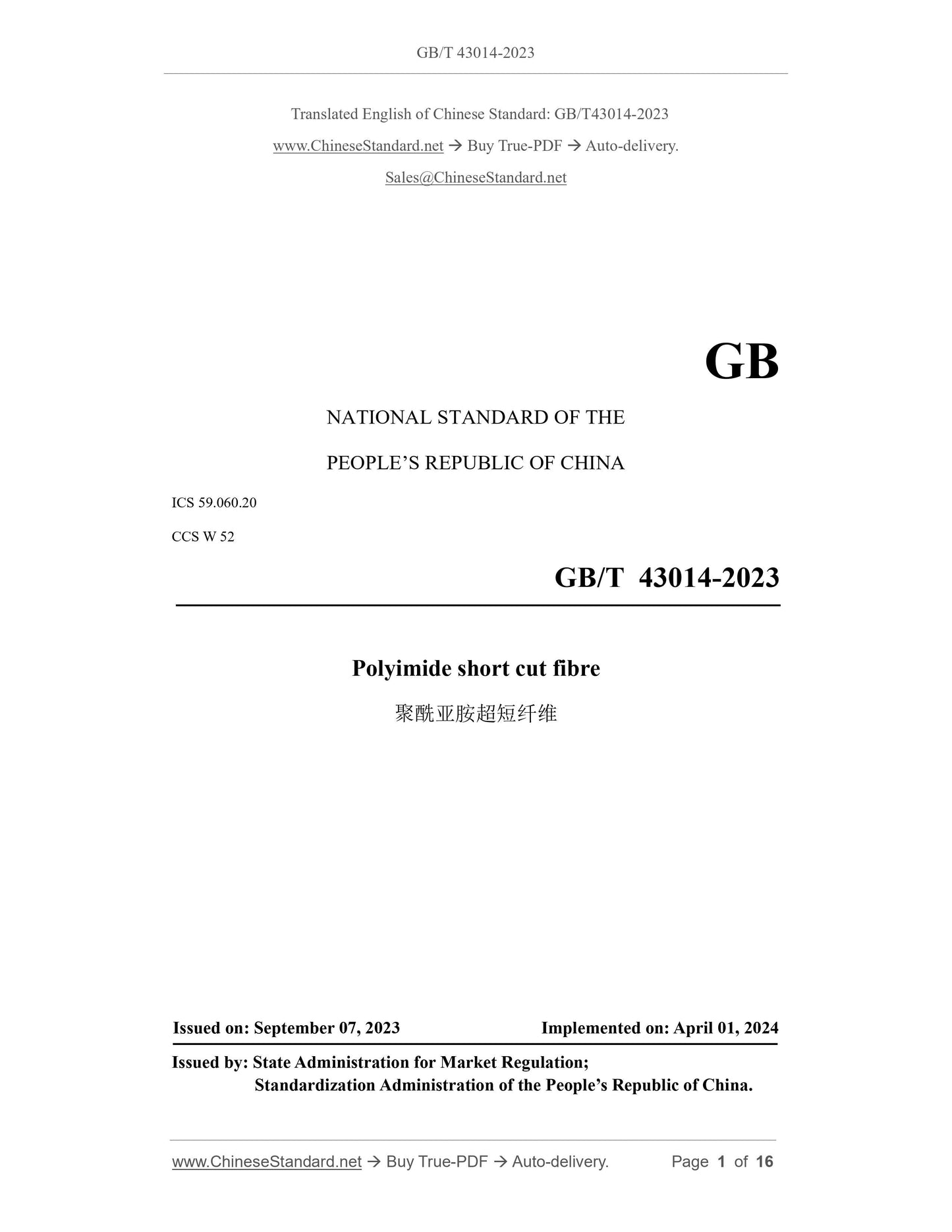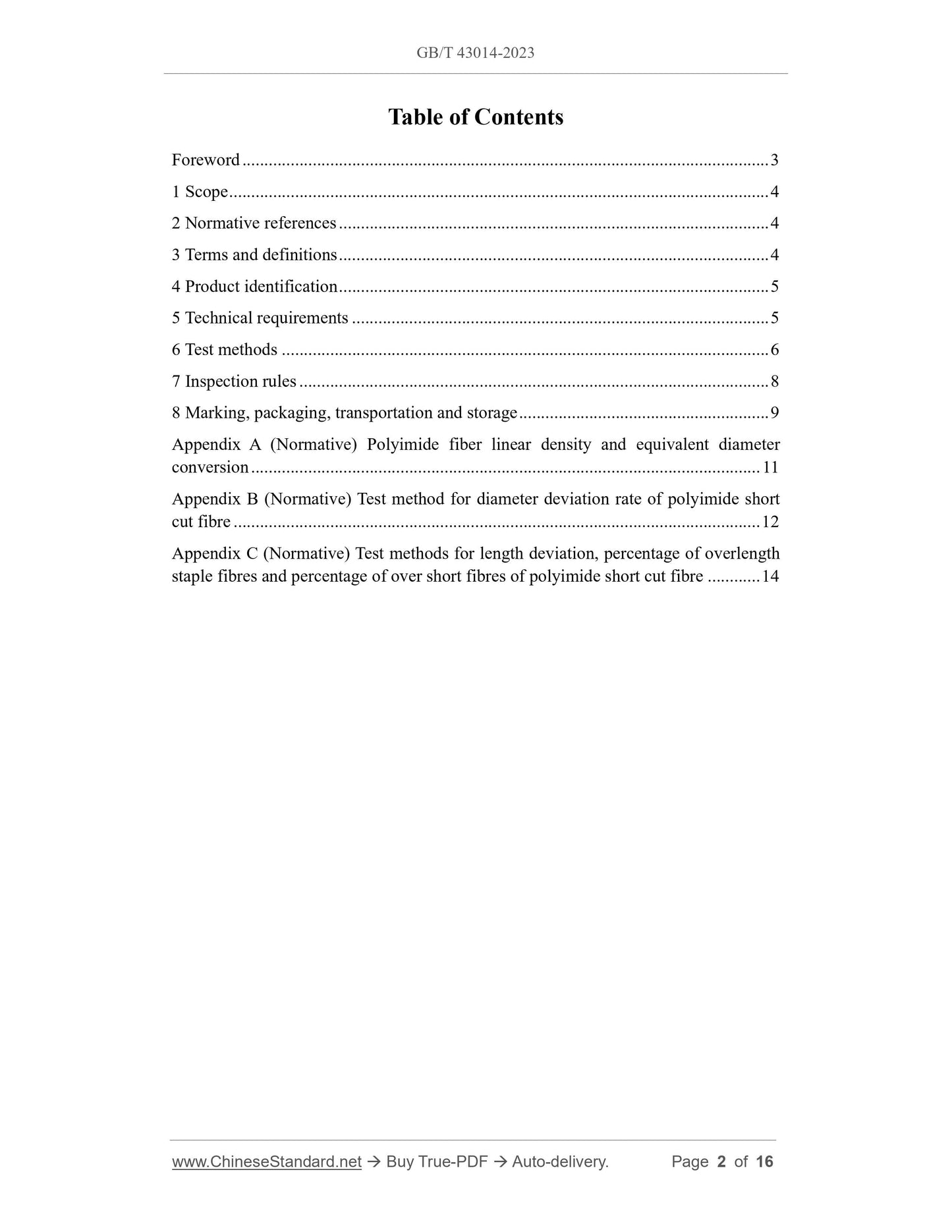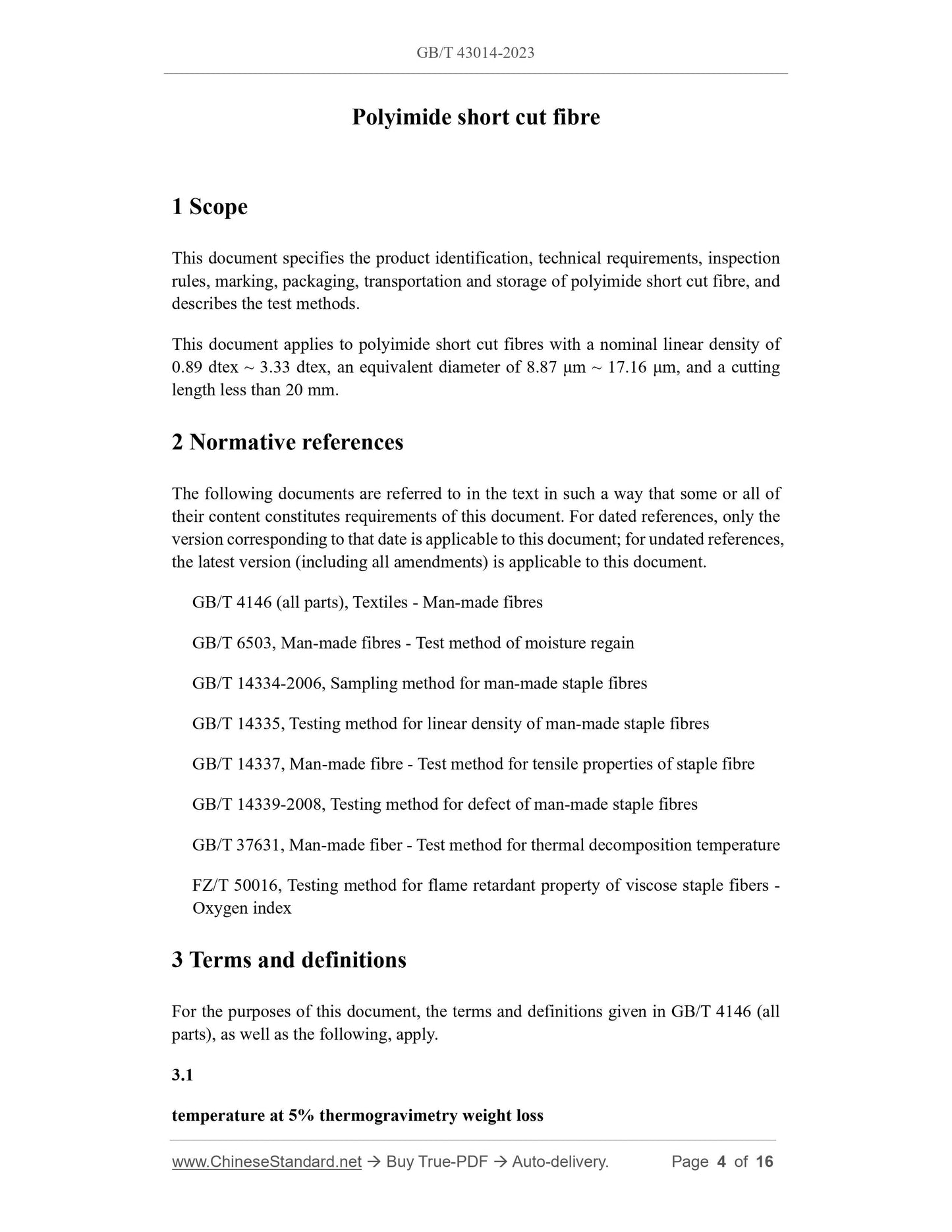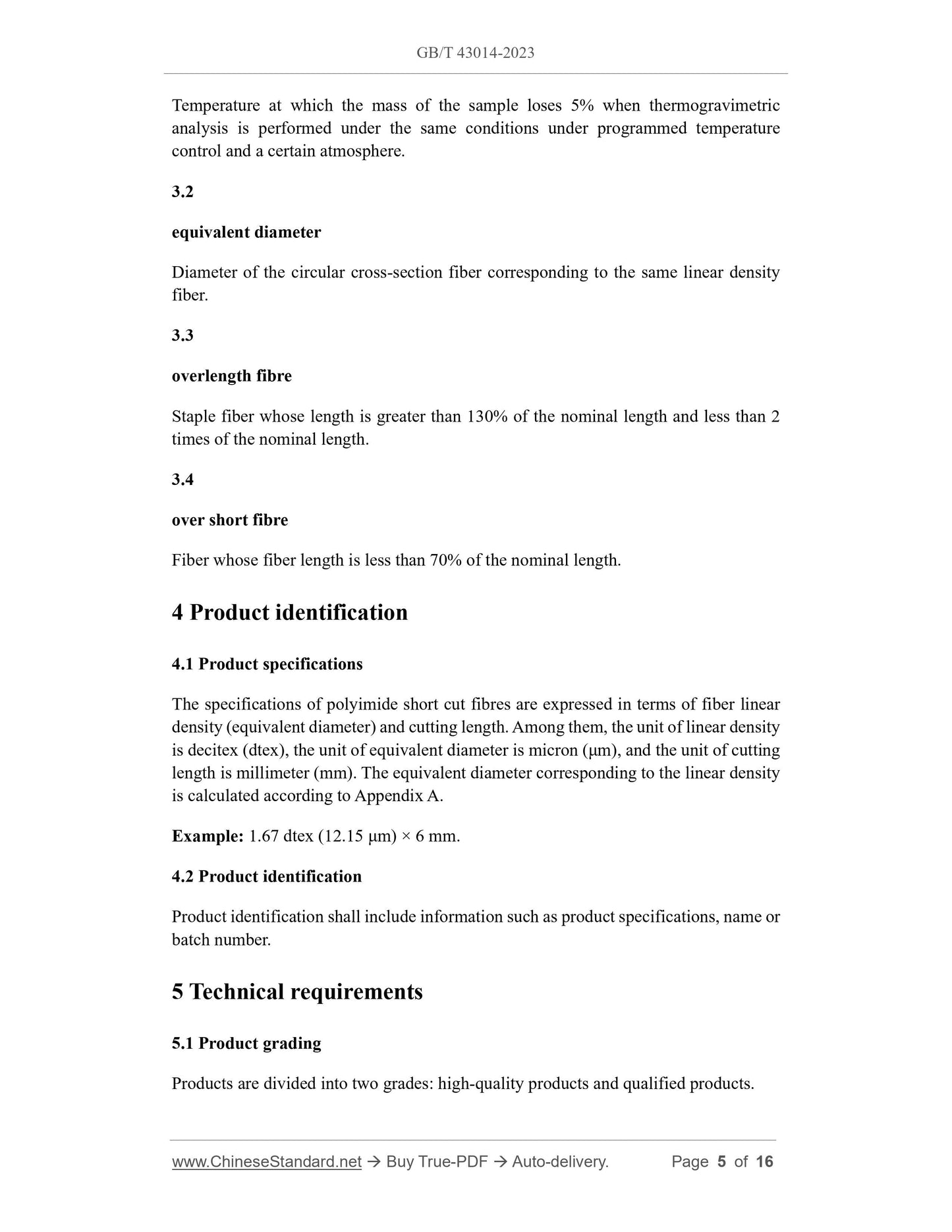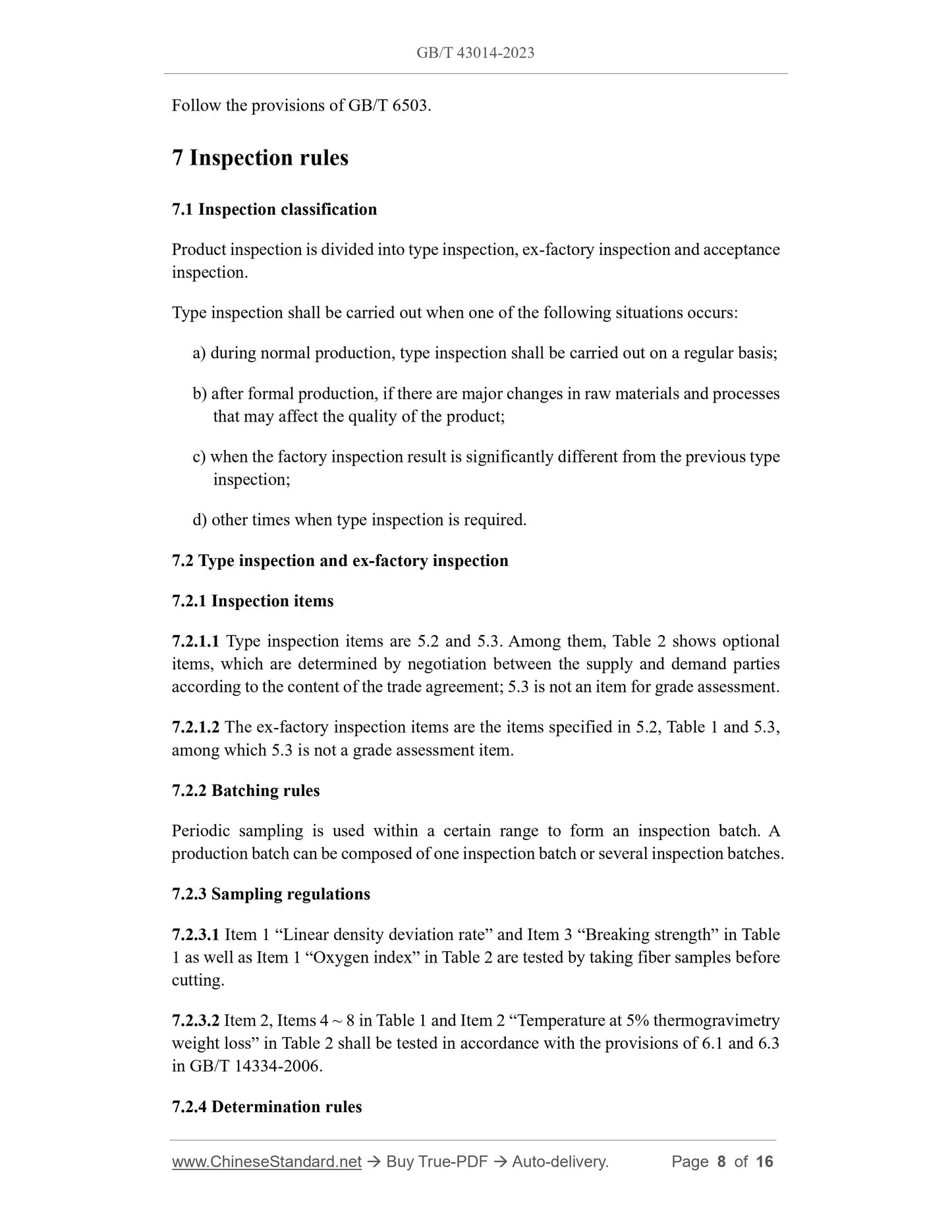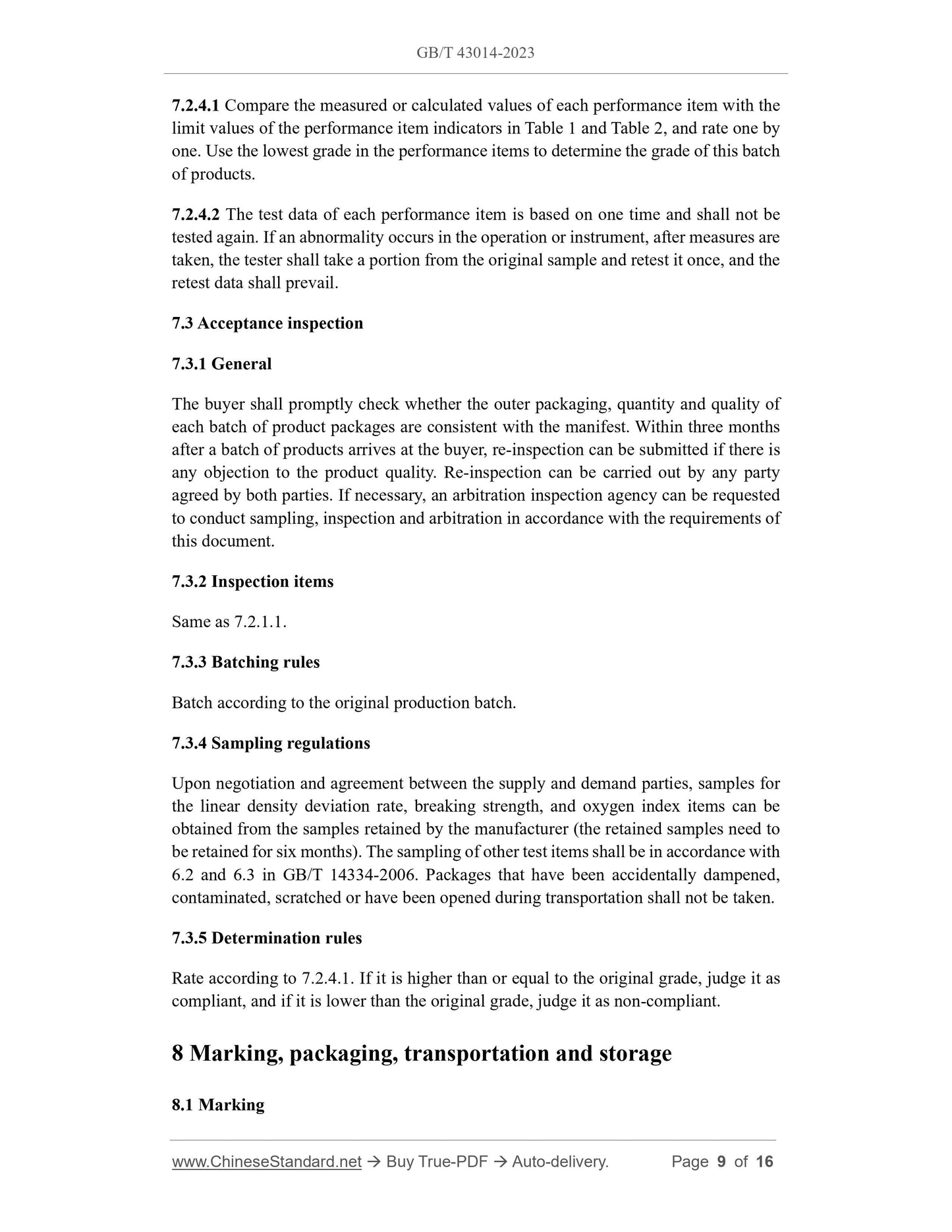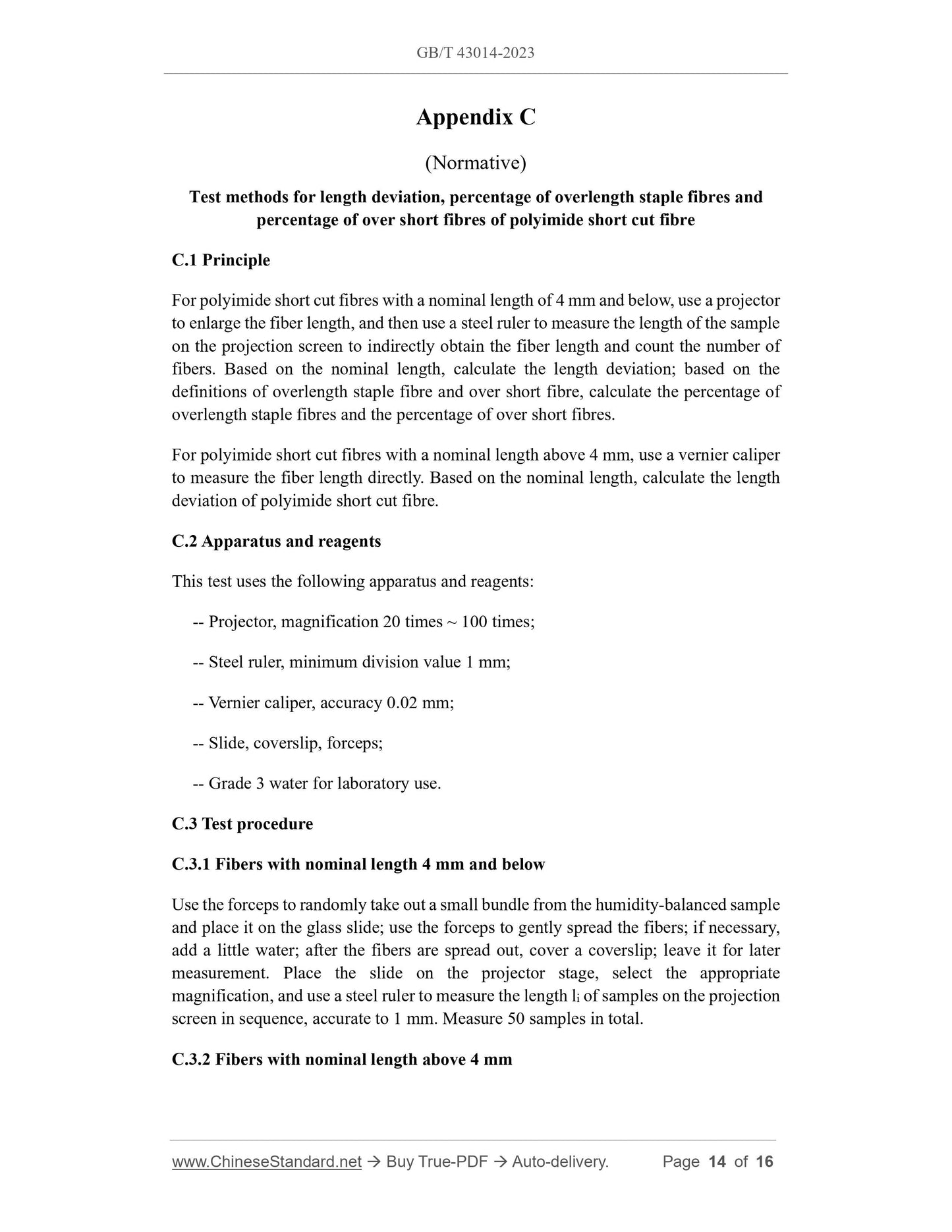1
/
of
7
www.ChineseStandard.us -- Field Test Asia Pte. Ltd.
GB/T 43014-2023 English PDF (GB/T43014-2023)
GB/T 43014-2023 English PDF (GB/T43014-2023)
Regular price
$245.00
Regular price
Sale price
$245.00
Unit price
/
per
Shipping calculated at checkout.
Couldn't load pickup availability
GB/T 43014-2023: Polyimide short cut fibre
Delivery: 9 seconds. Download (and Email) true-PDF + Invoice.Get Quotation: Click GB/T 43014-2023 (Self-service in 1-minute)
Newer / historical versions: GB/T 43014-2023
Preview True-PDF
Scope
This document specifies the product identification, technical requirements, inspectionrules, marking, packaging, transportation and storage of polyimide short cut fibre, and
describes the test methods.
This document applies to polyimide short cut fibres with a nominal linear density of
0.89 dtex ~ 3.33 dtex, an equivalent diameter of 8.87 μm ~ 17.16 μm, and a cutting
length less than 20 mm.
Basic Data
| Standard ID | GB/T 43014-2023 (GB/T43014-2023) |
| Description (Translated English) | Polyimide short cut fibre |
| Sector / Industry | National Standard (Recommended) |
| Classification of Chinese Standard | W52 |
| Classification of International Standard | 59.060.20 |
| Word Count Estimation | 14,133 |
| Date of Issue | 2023-09-07 |
| Date of Implementation | 2024-04-01 |
| Issuing agency(ies) | State Administration for Market Regulation, China National Standardization Administration |
Share
